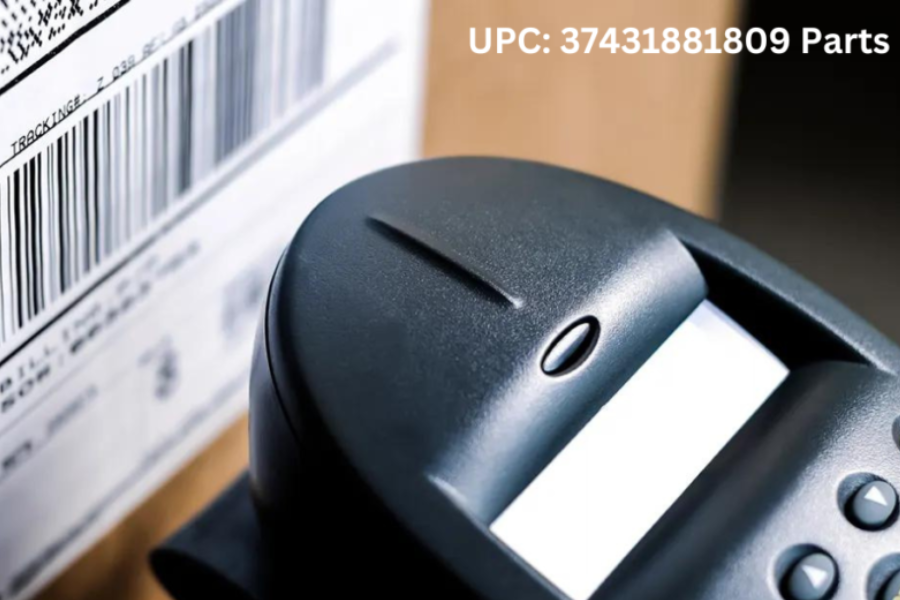In today’s fast-paced business environment, efficiency, accuracy, and streamlined operations are the key drivers of success. Companies navigating the complexities of global supply chains need robust systems that can effectively manage inventory, track parts, and ensure seamless transactions. The Universal Product Code (UPC) system has revolutionized the way goods are identified, tracked, and managed across industries, providing a standardized approach that enhances operational efficiency. Among these, UPC 37431881809 stands out as a prime example of how a single code can significantly impact parts identification and inventory control, reshaping business operations. This article explores the transformative effects of UPC 37431881809 on parts identification, inventory management, and the broader implications for businesses.
The Evolution of Parts Identification: A Historical Perspective
Efficient parts identification has been a critical aspect of commerce for centuries. In the past, merchants relied on manual record-keeping, using handwritten ledgers and labels to track their inventory. This method, though functional, was prone to errors and inefficiencies. As industries grew and global trade expanded in the 19th and 20th centuries, the challenges of inventory management became more pronounced. The sheer volume of goods being produced, shipped, and sold necessitated a more systematic approach to tracking and managing parts.
The introduction of barcodes in the 1970s marked a significant leap forward in parts identification. Developed by George J. Laurer, the Universal Product Code (UPC) was one of the first widely adopted barcode systems. It provided a standardized method to encode information about products, allowing for quick and accurate scanning. The UPC system revolutionized retail and manufacturing, enabling faster checkout processes, reducing human errors, and improving inventory management. Over the years, the UPC system has evolved, incorporating more advanced technologies and expanding its applications across various sectors.
The Mechanics of UPC 37431881809: Understanding the Code
UPC 37431881809, like all UPCs, is a unique identifier that encodes specific information about a product or part. It consists of a 12-digit numeric code structured into three components: the manufacturer’s identification number (first six digits), the item number (next five digits), and a check digit (final digit) to ensure accuracy during scanning. This code is machine-readable and is typically printed as a barcode on the product or its packaging. When scanned by a barcode reader, the code is converted into a digital format, allowing instant retrieval of product details, such as name, price, and description. This simplicity and efficiency have made UPCs indispensable in modern inventory management and parts identification.
Transforming Parts Identification: The Role of UPC 37431881809
UPC 37431881809 plays a transformative role in parts identification, especially in industries where precision and accuracy are paramount. In the automotive industry, for example, thousands of components must be tracked, identified, and matched correctly. A standardized UPC like 37431881809 ensures that each part is easily identifiable, reducing the risk of errors such as installing the wrong component, which could have serious safety implications.
In the electronics industry, where the complexity and variety of parts are immense, UPC 37431881809 enables manufacturers and retailers to manage inventory more effectively. By assigning a unique UPC to each part, companies can track the movement of components from production to retail, ensuring that inventory levels are accurately maintained and parts are available when needed. This level of control is crucial in industries where the timely availability of components can significantly impact production schedules and profitability.
Beyond these sectors, UPC 37431881809 is utilized in healthcare, aerospace, and other industries where precise parts identification is critical. The standardized nature of the UPC system means it can be applied across various industries, providing a consistent and reliable method for identifying and managing parts.
Inventory Control: The Power of UPC 37431881809
Inventory control is a challenging aspect of running a business, particularly for companies dealing with large volumes of parts and products. Inefficient inventory management can lead to stockouts, overstocking, and lost sales, all of which negatively impact a company’s bottom line. UPC 37431881809 addresses these challenges by offering a systematic approach to inventory control that is both efficient and reliable.
One of the key benefits of using UPC 37431881809 in inventory control is the ability to automate the tracking of parts and products. When a product with UPC 37431881809 is scanned at a point of sale or during inventory checks, the system automatically updates inventory records, reflecting current stock levels. This real-time data allows companies to maintain accurate records of their stock, reducing errors and ensuring that products are available when needed.
Moreover, UPC 37431881809 facilitates the reordering process. By integrating the UPC system with inventory management software, companies can set up automated reordering processes. When stock of a particular part drops below a predefined threshold, the system can automatically generate a purchase order for replenishment, maintaining optimal inventory levels. This automation saves time and reduces the risk of stockouts, which can disrupt operations and lead to lost sales.
UPC 37431881809 also supports more sophisticated inventory control strategies, such as Just-in-Time (JIT) inventory management. JIT minimizes inventory levels, with parts and products ordered only as needed. This approach reduces the costs associated with holding excess inventory and minimizes the risk of obsolescence. UPC 37431881809 provides accurate, up-to-date information about inventory levels, enabling companies to implement JIT strategies effectively.
Broader Implications of UPC 37431881809 for Business Operations
The impact of UPC 37431881809 extends beyond parts identification and inventory control, enhancing efficiency, reducing costs, and improving customer satisfaction.
Efficiency Gains: UPC 37431881809 automates parts identification and inventory control, reducing the time and effort required to manage inventory. This allows employees to focus on more value-added activities, such as customer service or product development. The efficiency gains also translate into faster turnaround times, enabling companies to respond more quickly to customer orders and changes in demand.
Cost Reduction: Accurate inventory tracking with UPC 37431881809 leads to cost reductions by minimizing excess inventory, reducing storage costs, and preventing obsolescence. Automated inventory control processes also lower labor costs associated with manual management. Furthermore, accurate parts identification reduces costly errors, such as incorrect shipments or returns.
Improved Customer Satisfaction: UPC 37431881809 enhances customer satisfaction by ensuring that companies can meet customer demands efficiently. Accurate and real-time inventory data helps prevent stockouts, ensuring product availability when needed. This reliability not only improves the customer experience but also builds loyalty, as customers are more likely to return to a business that consistently meets their needs.
Challenges and Considerations in Implementing UPC 37431881809
While UPC 37431881809 offers significant benefits, its implementation comes with challenges that businesses must address to ensure success.
Integration with Existing Systems: Integrating UPC 37431881809 with existing inventory management and point-of-sale systems can be complex, especially for businesses with legacy systems. Companies may need to invest in system upgrades or adopt new software that can seamlessly integrate with UPC technology.
Training and Change Management: Implementing UPC 37431881809 requires changes to existing business processes, which can be met with resistance from employees. To ensure a smooth transition, businesses should invest in training programs and implement change management strategies that address employee concerns and encourage buy-in.
Cost Considerations: The initial investment for implementing UPC 37431881809 can be significant, including costs for barcode scanners, software upgrades, and employee training. However, these costs should be weighed against the long-term benefits of improved efficiency and reduced errors.
Data Security and Privacy: Implementing UPC 37431881809 involves data collection and processing, raising security and privacy concerns. Businesses must ensure data is securely stored and protected from unauthorized access through robust measures such as encryption and access controls.
The Future of UPC 37431881809 and Inventory Management
The future of UPC 37431881809 in inventory management will be shaped by technological advances and evolving business needs. As companies seek to improve efficiency and reduce costs, the role of UPC 37431881809 is expected to evolve, incorporating innovations such as Internet of Things (IoT) devices, artificial intelligence (AI), and machine learning (ML).
Integration with IoT devices could provide real-time data on the location and condition of parts and products, offering even greater visibility into inventory. AI and ML algorithms can analyze data generated by UPC 37431881809 to identify patterns and trends, supporting more informed decisions about inventory levels, reordering, and demand forecasting.
As sustainability becomes increasingly important, UPC 37431881809 could also be used to track the lifecycle of products, supporting more sustainable business practices such as recycling and reuse.
Conclusion: The Transformative Power of UPC 37431881809
UPC 37431881809 has profoundly impacted parts identification and inventory control across industries, enabling businesses to manage inventory more efficiently, reduce costs, and enhance customer satisfaction. As technology evolves, the role of UPC 37431881809 in business operations is likely to become even more significant, offering new opportunities for innovation and improvement.
To fully harness the potential of UPC 37431881809, businesses must carefully address implementation challenges, invest in the right technology, train employees, and ensure data security. By doing so, they can position themselves for success in an increasingly competitive marketplace, leveraging UPC 37431881809 as a powerful tool for parts identification and inventory control.
Keep up-to-date with breaking news and updates on Easybib.blog

